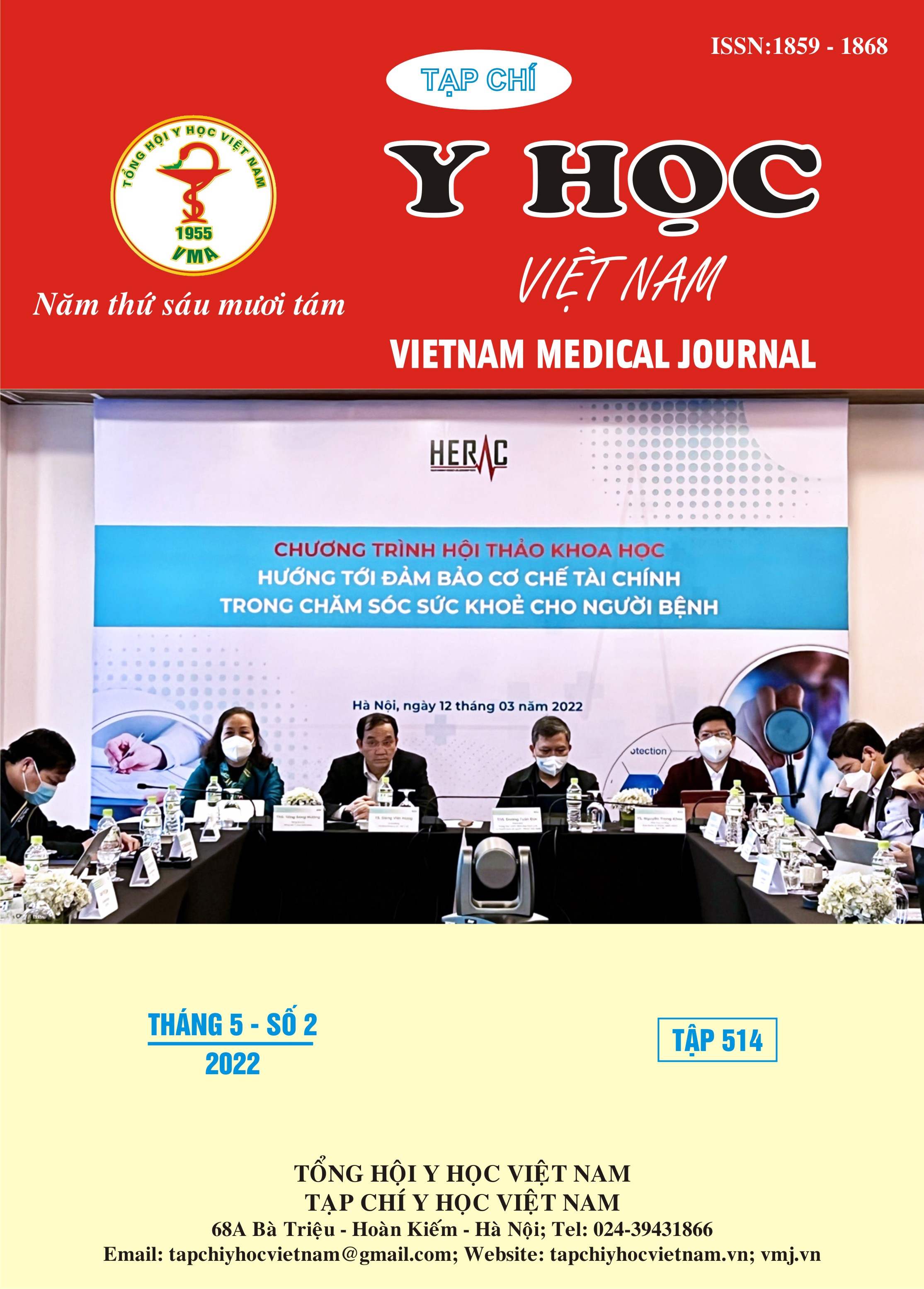ASSESSING THE OUTCOME OF SPONTANEOUS CEREBRAL HEMORRHAGE SURGERY AT TRA VINH GENERAL HOSPITAL IN 2019
Main Article Content
Abstract
Purpose: The study aimed to determine the ratio of clinical symptom, imaging results and spontaneous hemorrhagic brain surgery results at Tra Vinh General Hospital. Methods: We conduct a prospective study, describing a series of cases in 21 patients with idiopathic cerebral hemorrhage who had surgery in 2019. Survey of clinical symptoms of patients before surgery, assessing hemorrhage on CT-Scan, survey the postoperative results using the GOS index, evaluate the recovery of patients with Barthel index at discharge, 1 month and 3 months. Results: In 21 cases of the study plot, there were 18 males and 3 females. The median age is 53 (34-79). Average GCS at admission is 7-8 (5-13), 10/21 patients have mydriasis, 19/21 hemiplegia, average maximum blood pressure is 190 mmHg, most patients have money history of hypertension and alcoholism, 5/21 admission before 4 hours. Average volume of hemorrhage is 95ml (75-200), 14/21 is <1 cm from the cortex. The death rate is 7/21 cases, GOS1 = 1; GOS2 = 7; GOS3 = 5; GOS4 = 1; GOS5 = 7, GCS> 10 had better results, the Barthel index after 3 months had a significant improvement (p = 0.02). Conclusion: Although the death rate after surgery is still high and leaves many consequences for patients, surgery in idiopathic cerebral haemorrhage is still an effective option when medical treatment fails.
Article Details
Keywords
Idiopathic brain hemorrhage
References
2. Al-Shahi Salman R, Frantzias J, Lee R J, Lyden P D, Battey T W K, Ayres A M, et al. (2018), Absolute risk and predictors of the growth of acute spontaneous intracerebral haemorrhage: a systematic review and meta-analysis of individual patient data. Lancet Neurol. 17(10): p. 885-894.
3. Bhatia K, Hepburn M, Ziu E, Siddiq F and Qureshi A I (2018), Modern Approaches to Evacuating Intracerebral Hemorrhage. Curr Cardiol Rep. 20(12): p. 132.
4. Go G O, Park H, Lee C H, Hwang S H, Han J W and Park I S (2013), The outcomes of spontaneous intracerebral hemorrhage in young adults - a clinical study. J Cerebrovasc Endovasc Neurosurg. 15(3): p. 214-220.
5. Houben R, Schreuder F, Bekelaar K J, Claessens D, van Oostenbrugge R J and Staals J (2018), Predicting Prognosis of Intracerebral Hemorrhage (ICH): Performance of ICH Score Is Not Improved by Adding Oral Anticoagulant Use. Front Neurol. 9: p. 100.
6. Hsieh J T, Ang B T, Ng Y P, Allen J C and King N K (2016), Comparison of Gender Differences in Intracerebral Hemorrhage in a Multi-Ethnic Asian Population. PLoS One. 11(4): p. e0152945.
7. Musa K I and Keegan T J (2018), The change of Barthel Index scores from the time of discharge until 3-month post-discharge among acute stroke patients in Malaysia: A random intercept model. PLoS One. 13(12): p. e0208594.
8. Poblete R A, Zheng L, Arenas M, Vazquez A, Yu D, Emanuel B A, et al. (2019), Older Age Is Not Associated with Worse Outcomes Following Decompressive Hemicraniectomy for Spontaneous Intracerebral Hemorrhage. J Stroke Cerebrovasc Dis. p. 104320.
9. Shah Q A, Ezzeddine M A and Qureshi A I (2007), Acute hypertension in intracerebral hemorrhage: pathophysiology and treatment. J Neurol Sci. 261(1-2): p. 74-79.


